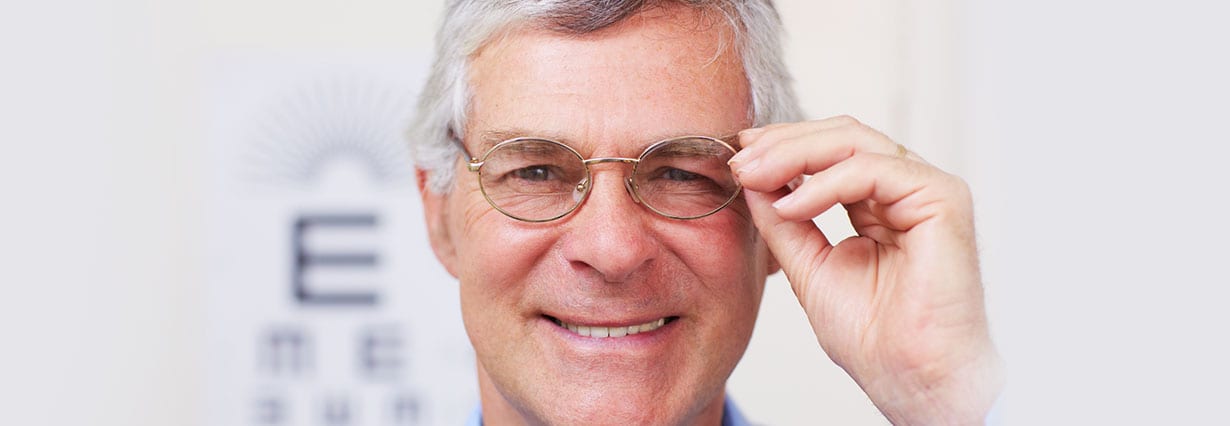Common Eye Conditions
Dry Eye
Most of us associate tears with emotions and such, but tears play an important role in the health of your eyes. Tears are critical to the eyes for lubrication, cleansing, and protection. Healthy eyes are continually bathed by tears produced by a combination of three glands located above both eyes. Sometimes a person has a decrease in tear production, or the tears produced are of poor quality. The result is a condition called dry eye.
Flashes and Floaters
As our eyes age and the vitreous (the thick gel inside the eye attached to the retina) becomes thinner it begins to pull away from the retina. This is known as posterior vitreous separation or detachment. Tissue debris that was once secure in the firmer vitreous gel loosens and moves around, casting shadows on the retina behind it. These are known as floaters. Flashes occur because of the pulling pressure on the retina. This pressure causes patients to see either flashing lights or lightning streaks.
Chalazion
When it comes to lumps on your eyelids, chalazia are the most common. They show up as a small swelling or lump on the eyelid, usually the upper eyelid. They often are red and appear inflamed. Sometimes they can become relatively large and make the person self-conscious. A chalazion forms when one of the ducts that drains one of roughly 100 meibomian glands in the eyelids becomes blocked. The fluid backs up inside the gland and this becomes a chalazion.
Dermatochalasis
As we age, we all lose some elasticity and strength in connective tissues in our upper and lower eyelids. But when this becomes excessive and the patient has extreme sagging and drooping, this is known as dermatochalasis. This is often confused with blepharitis, which is drooping of the eyelid tissue itself, but the two conditions are different. Dermatochalasis involves the connective tissues in the skin.
Diabetic Retinopathy
The retina is the light-sensitive tissue at the back of the eye. Its job is to receive light that the lens has focused, convert the light into neural signals, and send these signals on to the brain for visual recognition. When a person has diabetic retinopathy there are changes in the blood vessels in the retina. These vessels may swell and leak fluid. Abnormal blood vessels may grow on the surface of the retina. Diabetic retinopathy can develop in anyone who has type 1 or type 2 diabetes. The longer a person has diabetes, the more likely diabetic retinopathy will develop.
Conjunctivitis (Pink Eye)
Conjunctivitis/pink eye is an inflammation of the tissue that covers the white of the eye (sclera) and the inner lining of the eyelids (conjunctiva). The inner lining of the eyelids contains lots of tiny blood vessels and it produces mucus to keep the eyes moist. When they get irritated, the blood vessels enlarge and make the eye appear red. There are three different types of pink eye: viral, bacterial, and allergy related.
Cataracts
Cataracts affect the lens of the eye. The lens is a transparent film that focuses the images seen by the eye on the light-sensitive retina at the back of the eye. As cataracts develop the lens begins to become cloudy. This increases to the point where it eventually impacts vision, particularly at night. Cataracts are the most common cause of vision loss in people over the age of 40; they are the principal cause of blindness across the world.
Astigmatism
When a person has astigmatism, their cornea is shaped like a football rather than round. Pretty much everyone has astigmatism to some degree; it just may not be noticeable or impacting vision. A normal eyeball is shaped like a perfectly round ball. Light comes into it and bends evenly, thanks to the perfect roundness, making for clear vision. But when you have astigmatism, the football shape of your eyeball means that the light gets bent more in one direction than another. That means only part of an object is in focus. It often affects objects at distance, and they may appear blurry and wavy.
Read what our patients are saying!
“I am very pleased with all of the services. The personnel at Physicians Eye Clinic are very well versed in giving instructions and explaining what is to be experienced at every step so that the patient can relax.”
– Roger M, Mukilteo, WA.
Click here to read more reviews.

